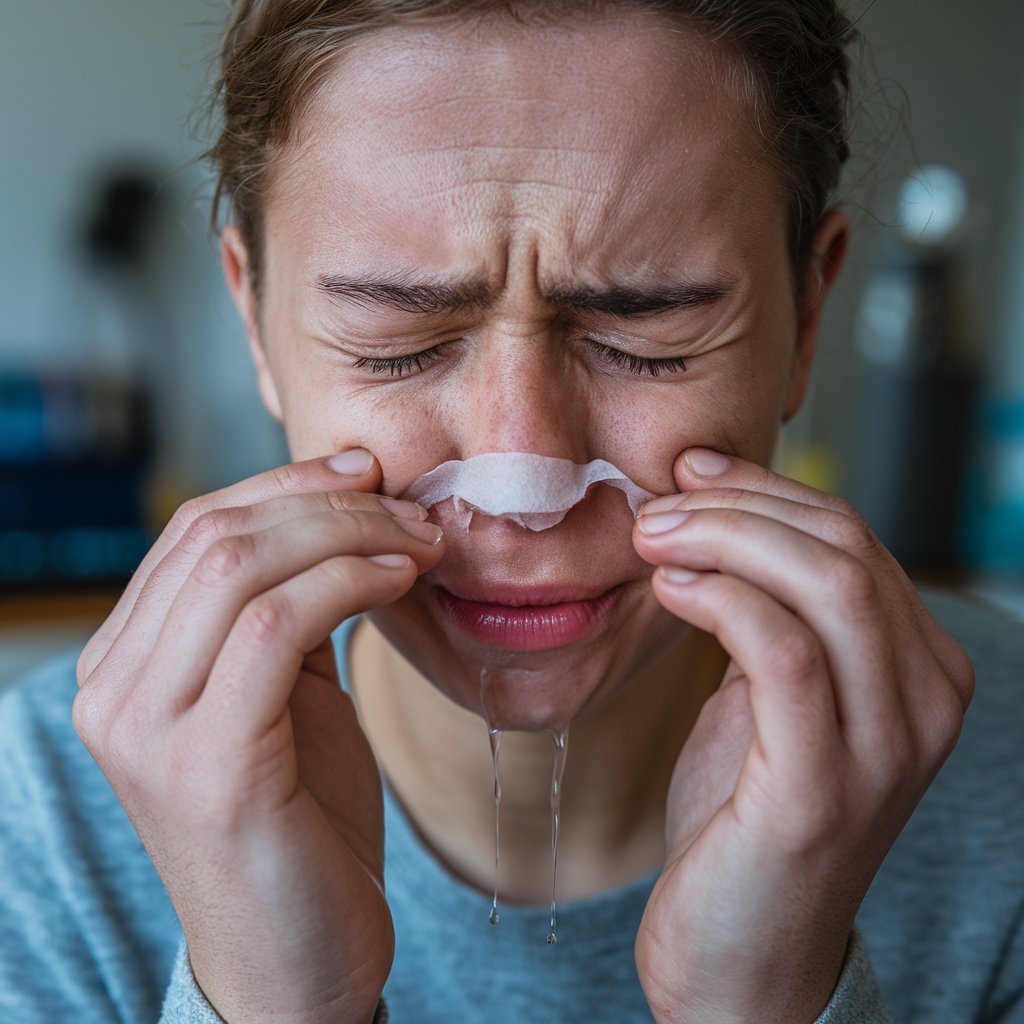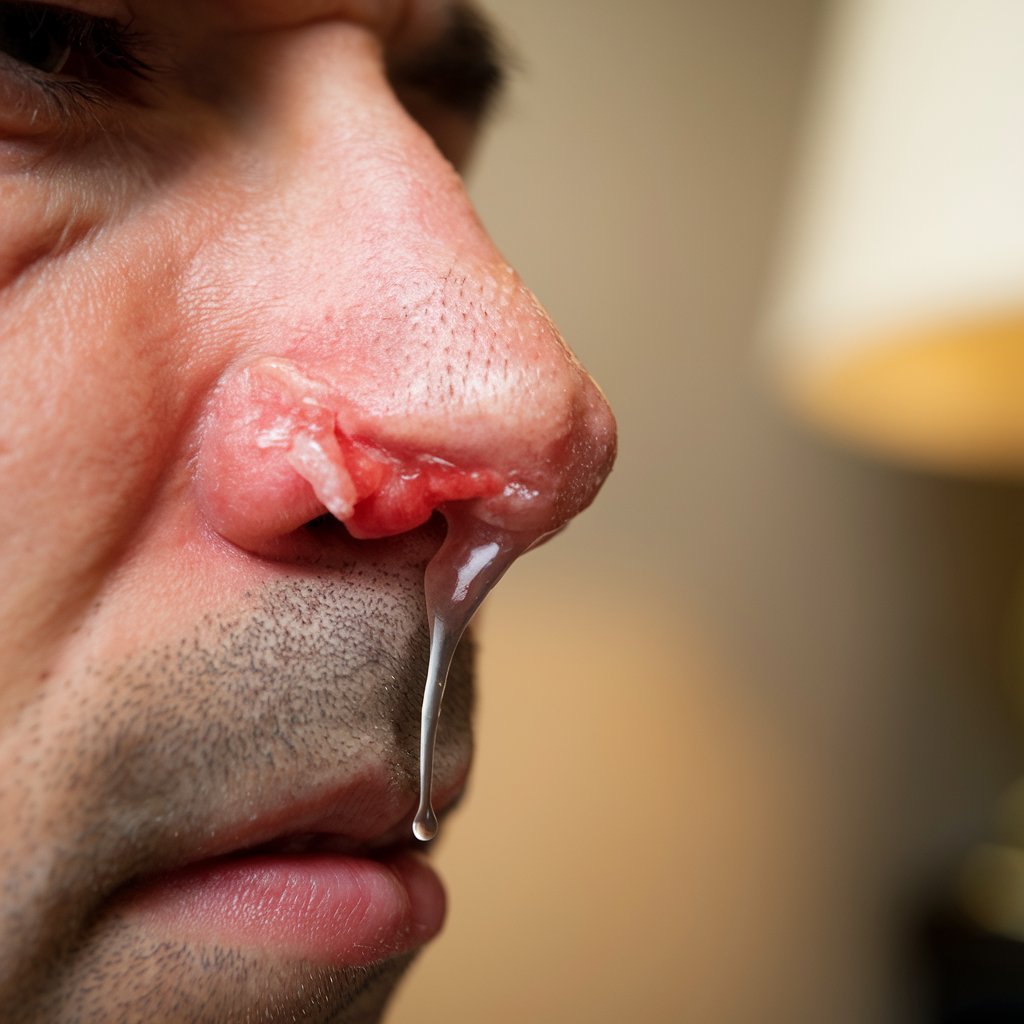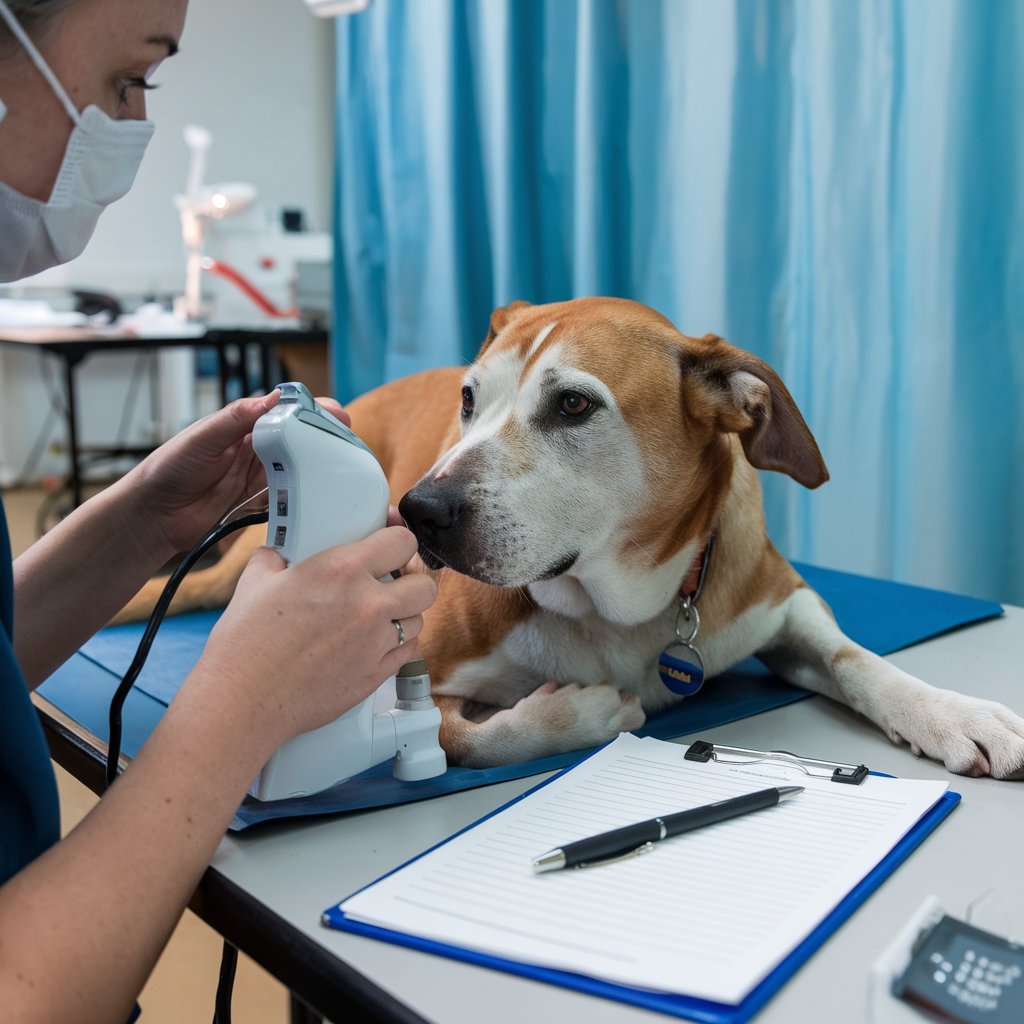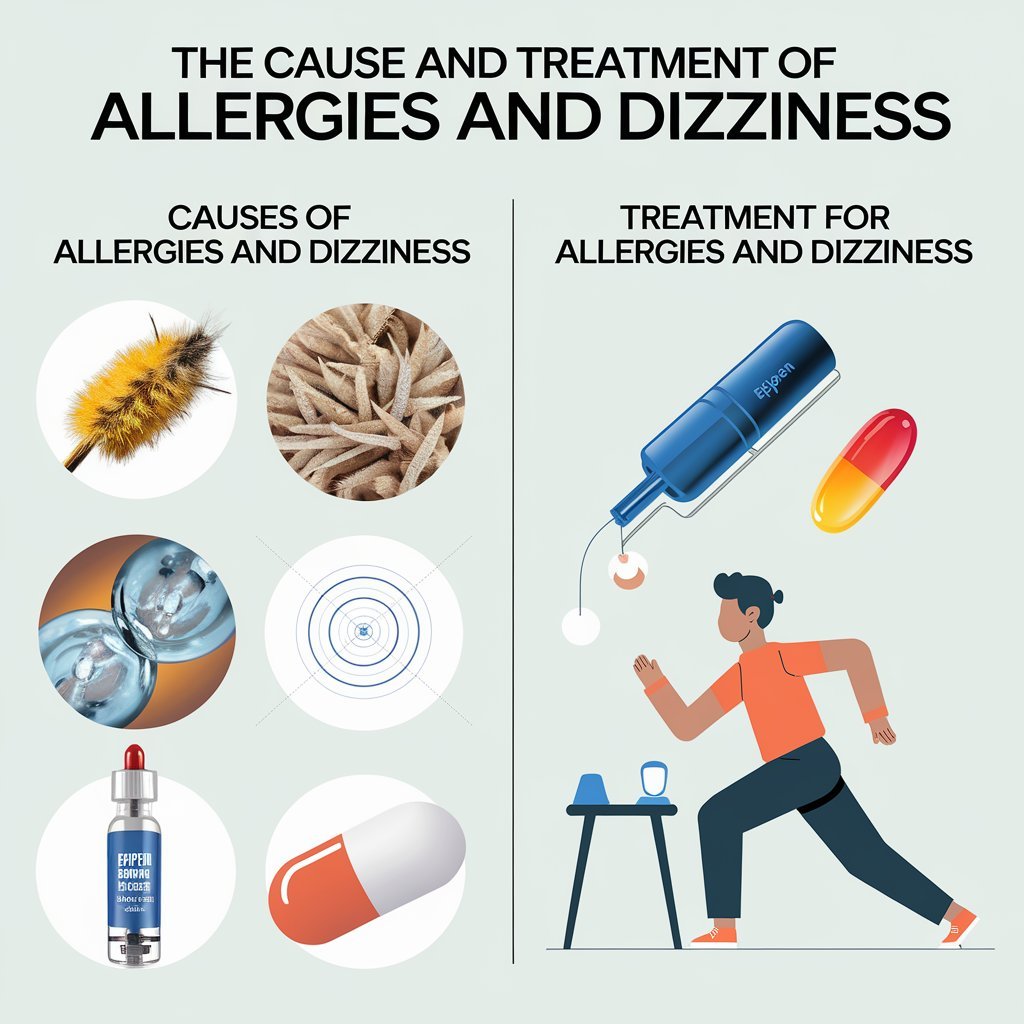Post-nasal drip happens when extra mucus flows down the back of the throat from the back of the nose. While post-nasal drip is typically not a sign of anything seriously wrong, it can be quite unpleasant and even provoke a cough or sore throat. Fortunately, there are many ways to diagnose and treat this symptom
Post-Nasal Drip Symptoms
The most apparent symptom of post-nasal drip is the sensation of mucus collecting in your throat or dripping from the back of your nose down the back of your throat. You may also experience other symptoms such as

- Coughing
- Frequent swallowing
- Raspy or gurgling speech
- A sore, irritated throat
- Swollen tonsils that make it feel like you have a lump in your throat
- Throat clearing
These can come and go during the day or are more chronic. Post-nasal drip itself can be chronic or only sometimes cause symptoms. A sore throat and all of the other symptoms above may be worse when you have spent time lying down or talking extensively.
Causes
Post-nasal drip often occurs when your body is fighting off an infection or has another health condition that causes mucus production to increase. Several short-term, sudden, or long-lasting factors can cause this to happen.

- Allergies
- Bacterial infections
- Gastroesophageal reflux disease (GERD)
- Hormone fluctuations
- Overly sensitive nose (vasomotor rhinitis)
- Pregnancy rhinitis (stuffy nose)
- Structural abnormalities in the nose, like a deviated septum
- Viral infections, such as the flu or common cold
Other factors that can cause more mucus and post-nasal drip include :
- Bright lights
- Cold temperature
- Warm and dry areas
- Spicy foods
- Some medicines like birth control pills or blood pressure drugs
The duration of postnasal drip would be determined by the cause. For instance, if it is caused by a common cold, it might take a week to heal. A longer condition, such as allergies, might be symptoms persisting until the treatment is well-managed
Diagnosis
Post-nasal drip can often be diagnosed by a healthcare provider after reviewing your symptoms and conducting a physical examination. This typically involves asking questions about other symptoms that may point to an infection. A healthcare provider will also examine the back of your throat for swelling, redness, or phlegm.
The healthcare provider may conclude that further testing is required to identify the cause. Tests may include
- Allergy testing: Assesses if the post-nasal drip may be caused by an allergen, such as pollen, or food intolerance
- Imaging (X-ray, MRI, or CT scan): Aids in the differentiation of a possible structural abnormality of your sinuses, for example, a deviated septum
- Interventional tests: A scope is used to inspect the upper throat, to check for acid reflux, or to visualize the inner lining of the digestive tract if GERD is suspected
How To Stop Post-Nasal Drip
Treatment for post-nasal drip depends on what is causing the symptom in the first place. Improving the excess mucus drainage is the key to addressing the mucus itself.
Home Remedies
A healthcare provider may recommend finding relief with home remedies if post-nasal drip is due to a short-term cause, like a common cold or other virus. Home remedies include:
- Flushing out your nasal passages with a nasal irrigation kit8
- Gargling with saltwater
- Keep your living area vacuumed and dusted
- Stay hydrated
- Use a humidifier at night or a vaporizer that has congestion-clearing essential oils
Over-the-Counter (OTC) Medications
You can usually control a scratchy throat and other post-nasal drip symptoms with an over-the-counter (OTC) product, such as:

- Antihistamines for allergy symptoms
- Decongestants to reduce swelling
- Pain relievers and cough drops for a sore throat
- Saline or glucocorticoid nasal spray
Prescription Medications
Severe or chronic post-nasal drip may need prescription drugs, including:
- Acid-reducing drugs for a condition like GERD
- Antibiotics for a bacterial infection
- Antifungals for a fungal respiratory infection
- Steroids for asthma-related cases
Prevention
Post-nasal drip is quite common and, in most cases, not something to worry about, but it can be quite irritating. In order to prevent post-nasal drip, you will want to treat what’s causing it in the first place.
You can start this by following home and OTC remedies to keep your airways moist and mucus drained. You can also try avoiding the initial cause of the extra mucus formation, such as by practicing good hand hygiene to prevent colds.
When To Call a Health Care Provider
Most cases of post-nasal drip will resolve on their own within a relatively short period of time. Keep in mind whether your symptoms are indeed improving.
You might want to visit a medical doctor if the condition worsens, or when there is congestion and runny nose after the three weeks or a fever sets in with a congestion or running nose. Approach a healthcare professional for advice should the child display unilateral nasal drainage or the sputum comes out smelling fetid.




